What Happens If You Don't Bleed Your Brakes After Repairing Brake Line
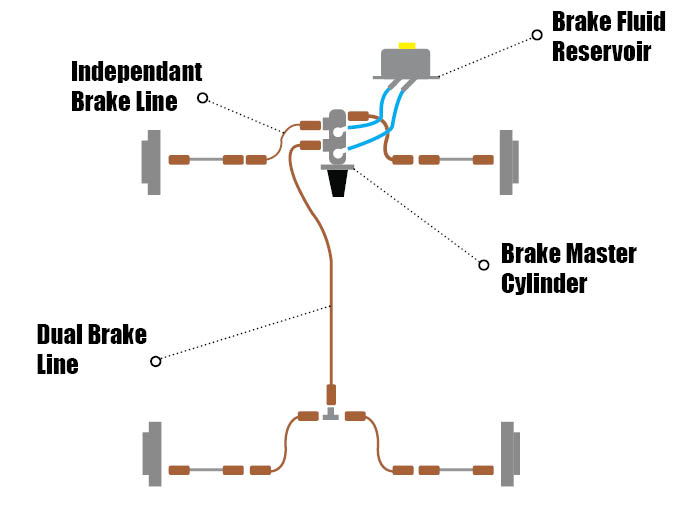
I ask myself this every time on piece of work on the brakes of an sometime car, "will I become away with just bleeding one caliper" because y'all know the bleed nipples are equally rusty equally hell.
It'southward common practice to bleed all four brake lines after opening any ane brake line. However, if the brake line you lot open is an independent restriction line, so no, you don't have to bleed all 4 brakes.
This mail will comprehend identifying the blazon of brake lines you have, brake bleeding procedure, and sequence. The blazon of brake fluids y'all tin mix and the types you must never mix.
A common mistake when working on brakes is to mix incompatible brake fluid types. This uncomplicated fault can exist costly as the system will need to be flushed, and it'southward possible to damage components. I'll tell you lot what brake fluids you can mix and what fluids you must never mix.

Brake Caliper Bleed Nipple
I know bleeding all four wheels tin be a lot of extra work, especially if the bleed nipples look like they're really rusted solid. I call it nipple roulette – Will they or won't they shear off. If they do, you lot're looking for a replacement caliper.
I understand the dilemma, just sometimes y'all won't have a option. You'll have to drain all wheels. To effigy out if it's OK to bleed but one caliper, we'll first need to effigy out if the restriction line is an independent line. (most are)

Contained Restriction line
So how do I know if it's an independent brake line? Most mod cars will employ independent restriction lines. It'southward like shooting fish in a barrel to effigy out. If you've got an ABS unit, check and meet how many distribution lines. They'll exist marked almost likely FL (Front Left), FR (Front Correct), RR (Rear correct), and RL (Rear left).
Each of the wheels has its ain dedicated brake line. Therefore it's OK to just bleed ane brake caliper. (so long as the brake fluid doesn't or hasn't drained below the low-level mark in the reservoir).

If your auto was made in the last twenty years, yous'd probably have an ABS arrangement. Early ABS systems were 3 aqueduct, meaning the forepart calipers had independent brake lines, and the rear was paired. This was also a popular pre-ABS brake line layout.
If you lot take a 3 aqueduct ABS system, either of your front calipers will exist OK to drain independently, but if yous are working on whatsoever one of the rear calipers (or cylinders), you lot'll need to drain both of them. You lot go the idea. You'll accept to bleed whichever restriction calipers (or cylinders) are on the same line.
Vehicles older than xx years will probably have a tandem master cylinder with a diagonal brake line layout or paired layout front and back. Yous'll need to identify if the restriction caliper yous're working on has an independent line.

Opening Brake Caliper Bleed Nipple
Opening brake nipples can sometimes exist the hardest office of the whole chore. I usually approach them with a wire brush and WD40 well in advance of actually putting a wrench on them.
A wrench is often non much apply, equally the small nipple head is usually stripped. The vice grips should do the task; unfortunately, nosotros can't use oestrus to help move it. The caliper pistons have rubber seals. If I can get them out, I similar to replace them, but be certain that the seat of the nipple is identical to the sometime ones. Otherwise, they'll leak.
Restriction Bleeding Sequence
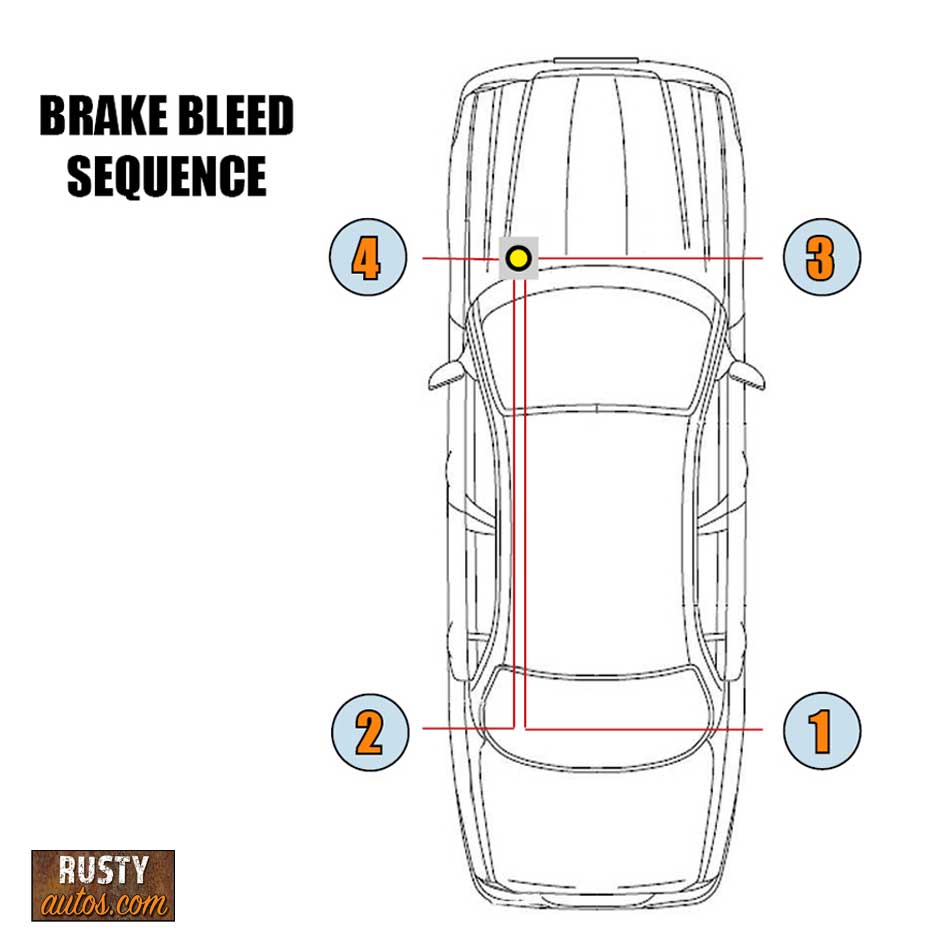
The process is simple enough. If you're bleeding all the brakes, start with the brake line that's farthest from the brake fluid reservoir. That'll be the right-hand rear bike on nearly cars.
If your car or truck has one brake line feeding both rear wheels, yous'll need to bleed both of these kickoff earlier moving to the passenger side front (next closest). Then finally, the driver's bike.
Braking Arrangement Checklist
- Bank check brake fluid level every month
- Alter brake fluid every 3 years
- Bleed brakes yearly
- Check brake pad/shoe wear every 3 months
- Check condition of rotors and drums every vi months
- Check for brake cylinder/calipers fluid leaks every 6 months
- Check and adjust emergency brake yearly
- Check condition of brake lines and hoses yearly
- Check operation of brake equalizer yearly
Brake Fluid Types

Most restriction fluid types are hygroscopic. They absorb wet from the atmosphere. Brake fluid should be stored in a sealed container, and your restriction fluid reservoir cap shouldn't be left open for extended periods.
So what's the problem with a lilliputian moisture?
When brake fluid has a high moisture content, the rut from the brakes is absorbed by the brake fluid. The moisture in the fluid then boils and turns to steam = Spongy feeling brake pedal.
Also, the moisture, if ignored, will cause rust to form within the calipers and chief cylinder. This can't be cleaned. They'll need to be replaced. Moisture volition make its way into the fluid even with a practiced sealing reservoir cap, and so that's why it'southward important to modify or flush your brake fluid every 3 years.
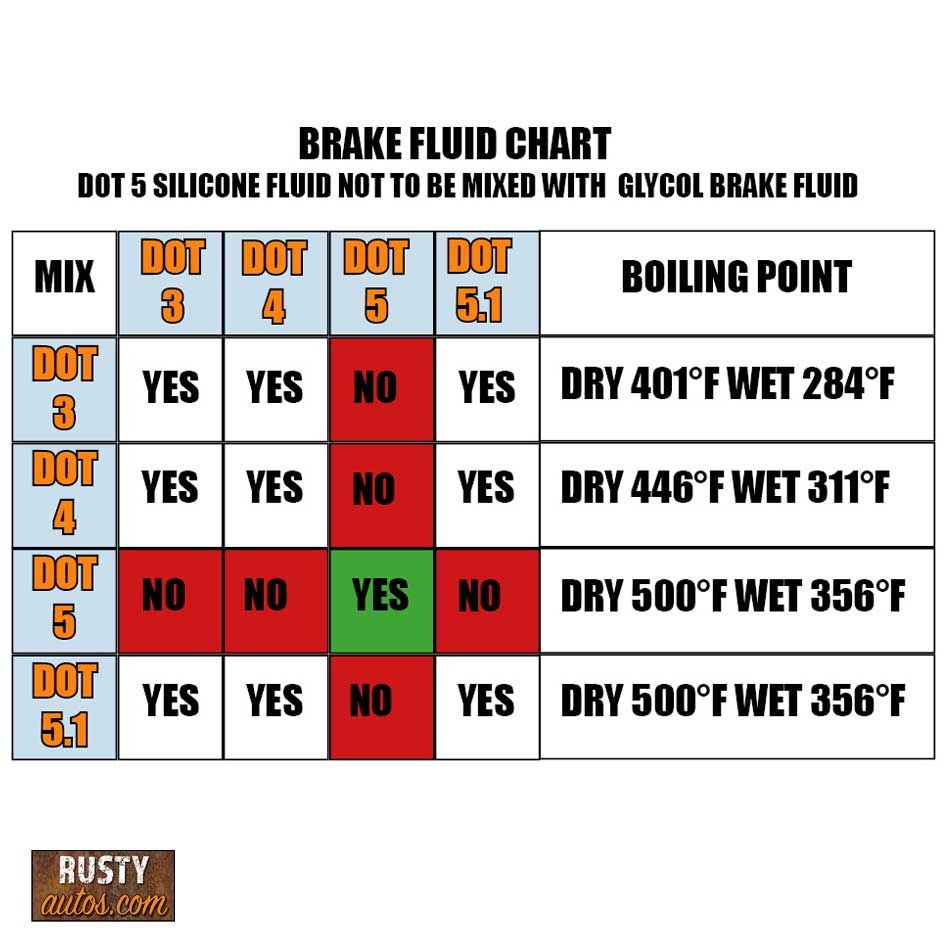
Restriction fluid types are coded, and the blazon to be used will be marked clearly on your fluid reservoir cap. It will be marked Dot 3, 4, five, or v.1. I like to keep things simple. You can divide brake fluid into 2 types – Glycol or Silicone based.
Without getting too far into the weeds, Glycol-based fluids are compatible but ideally shouldn't exist mixed considering they have different humid points, merely you won't hurt the automobile if you do mix them. Glycol-based uniform families of fluids are Dot iii, Dot four, and Dot v.1.
What's the difference betwixt Dot 3, iv and 5.1?
Basically, the amount of heat they withstand earlier boiling, higher is better. Simply apply whichever fluid is marked on your cap. Also important to notation Glycol-based fluids will strip pigment, so conscientious splashing this stuff around.
Silicone-based Dot 5 fluid must not exist mixed with Glycol-based Dot 3, 4, or 5.1. If mixed, these fluids volition plough into sludge in the organisation, and the pedal volition feel similar a pillow. The mixed fluids will impairment your calipers, primary cylinder, and ABS organization if left in the organization.
Dot v is used in all military vehicles, and since it doesn't absorb moisture, it doesn't need to be changed at regular intervals. It's excellent in colder climates as the low moisture content prevents freezing fluids, and it's paintwork friendly.
Dot v is more compressible than the Glycol types, then the pedal can sometimes experience a little spongy.
If you need restriction fluid or whatsoever brake system parts, cheque out the Amazon link below.
Amazon Automobile Brake Repair Tool
Brake Bleeding
Bleeding the brakes is traditionally done past two people. I think sitting in the commuter'due south seat, barely able to attain the brake pedal. I was the brakeman while my begetter issued the pump and hold commands.
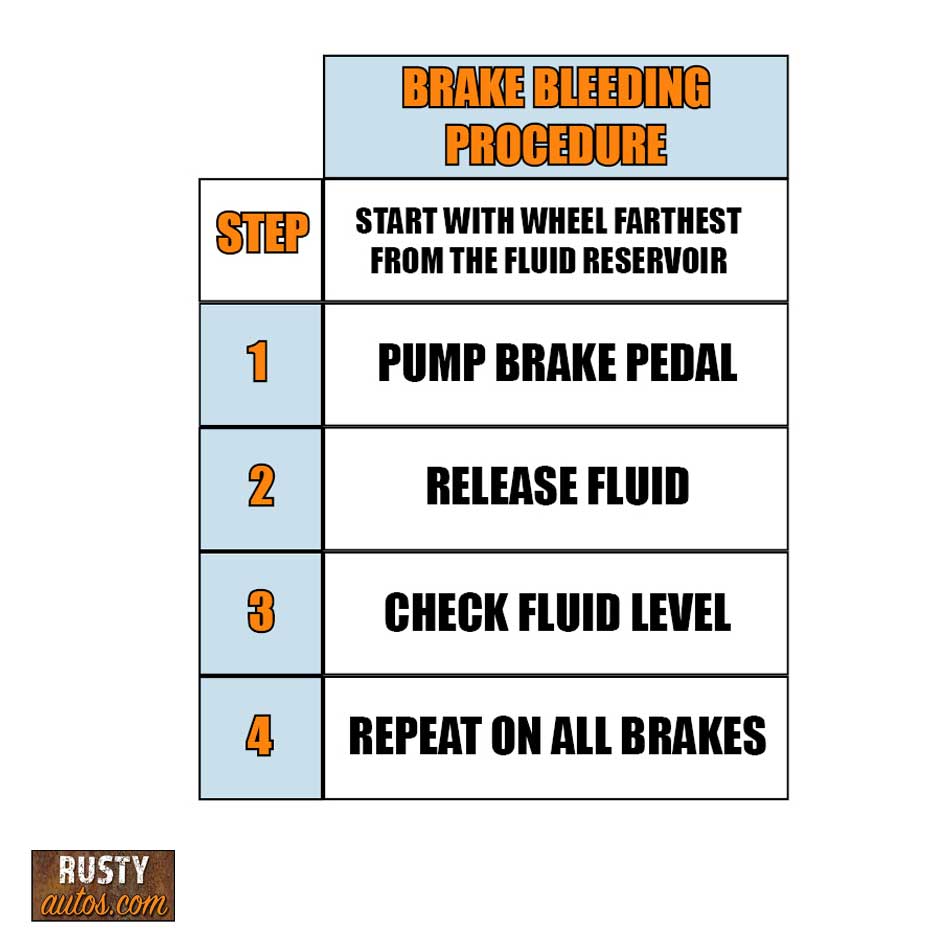
When it comes to bleeding the brakes, you accept the option of doing the two-man pump, hold, and release, and in that location's a couple of other MacGyver blazon hacks, just a proper vacuum brake bleed kit is the all-time choice.
Vacuum Drain Kit Preferred
A drain kit is preferred, especially on older cars, considering pumping the brake pedal tin crusade impairment to the master cylinder seals, as they're pushed further down into the cylinder than normal.
In my workshop, I used a couple of different types. One pressures the brake fluid reservoir, and I simply open up each bleed nipple in sequence. You do accept to go along a shut middle on the fluid level, though.
And the 2d and my preferred method is the vacuum kit. A handheld vacuum pump is used to draw fluid from each private bleed nipple. I've listed a vacuum brake bleeder on the Restriction repair tools folio that'south perfect for home apply.
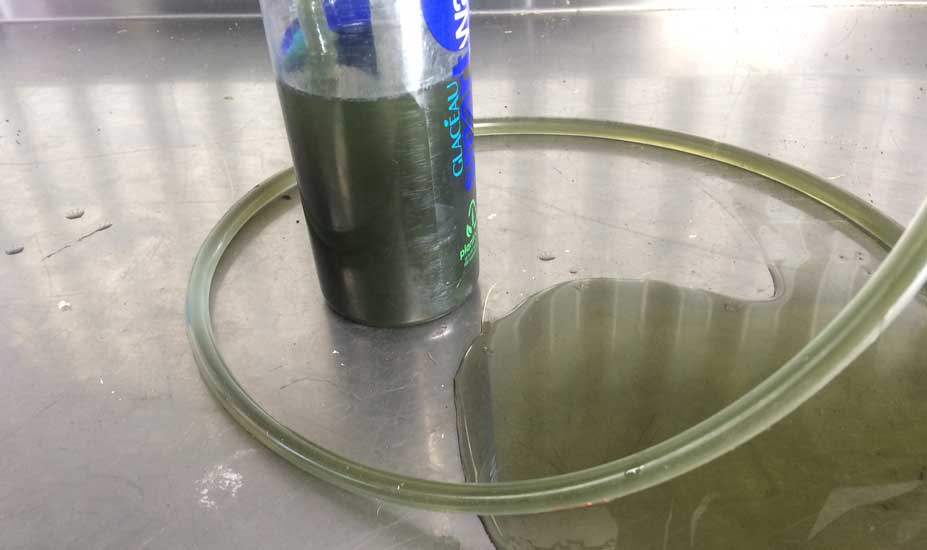
MacGyver Style Brake Bleeding
You'll need a quart of brake fluid, WD40, wire brush, clean rag, selection of small-scale size ring wrench'southward, vice grips, 3 anxiety of clear hose, and a container for waste matter fluid.
Here'due south the two-man pump, hold and release method.
1
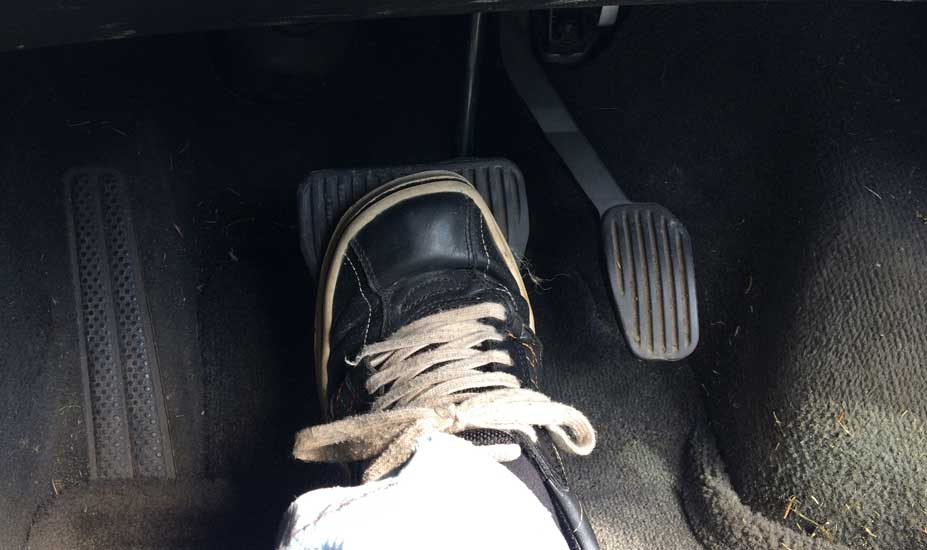
- Pump Brakes v times
- Agree Brake Pedal Downwards
2
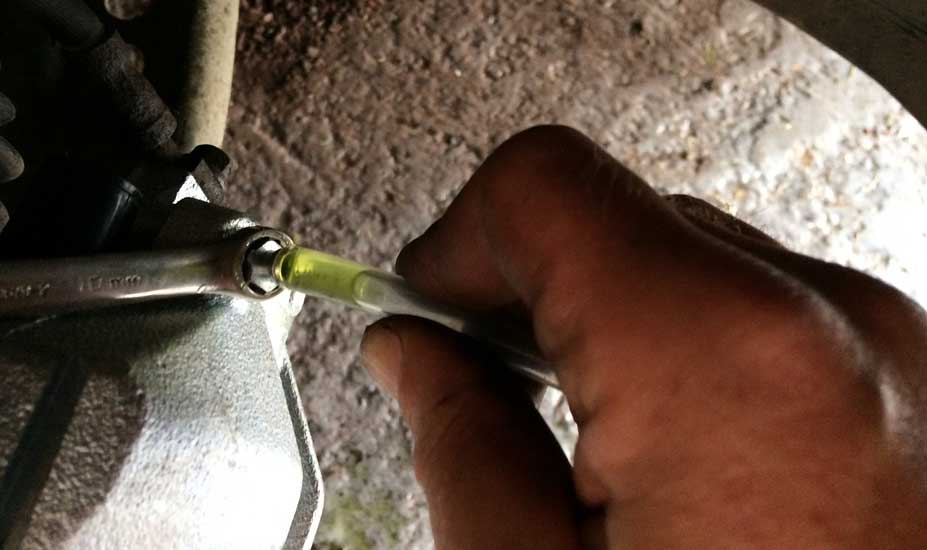
- Beginning With Bicycle Furthest From Reservoir
- Apply grease around the drain nipple threads (prevents air contagion)
- Open Nipple to release fluid
- Shut Nipple
- Repeat iii to iv times
3

- Top up Restriction Fluid
4
- Repeat The Process For All Wheels

You tin can bank check out all the tools I apply to repair brake systems, including workshop manuals, here on the Brake repair tools folio.
Related Questions
How often should you outset a archetype car? A classic motorcar should be driven once a week. Take it for a thirty-minute drive. Simply starting a classic car is OK for charging the bombardment but has a negative result on the oil and exhaust arrangement. Short trips cause condensation, which is the enemy.
How practise y'all store a classic car? A archetype car should be stored in a garage, preferably heated. If y'all don't take a garage, and then a breathable auto cover is the next best matter. Avoid plastic as information technology traps condensation. Keep your gas tank total and apply a gas stabilizer and battery maintainer.
What Happens If You Don't Bleed Your Brakes After Repairing Brake Line,
Source: https://rustyautos.com/bleed-all-brakes-changing-caliper/
Posted by: colemancultalty.blogspot.com


0 Response to "What Happens If You Don't Bleed Your Brakes After Repairing Brake Line"
Post a Comment